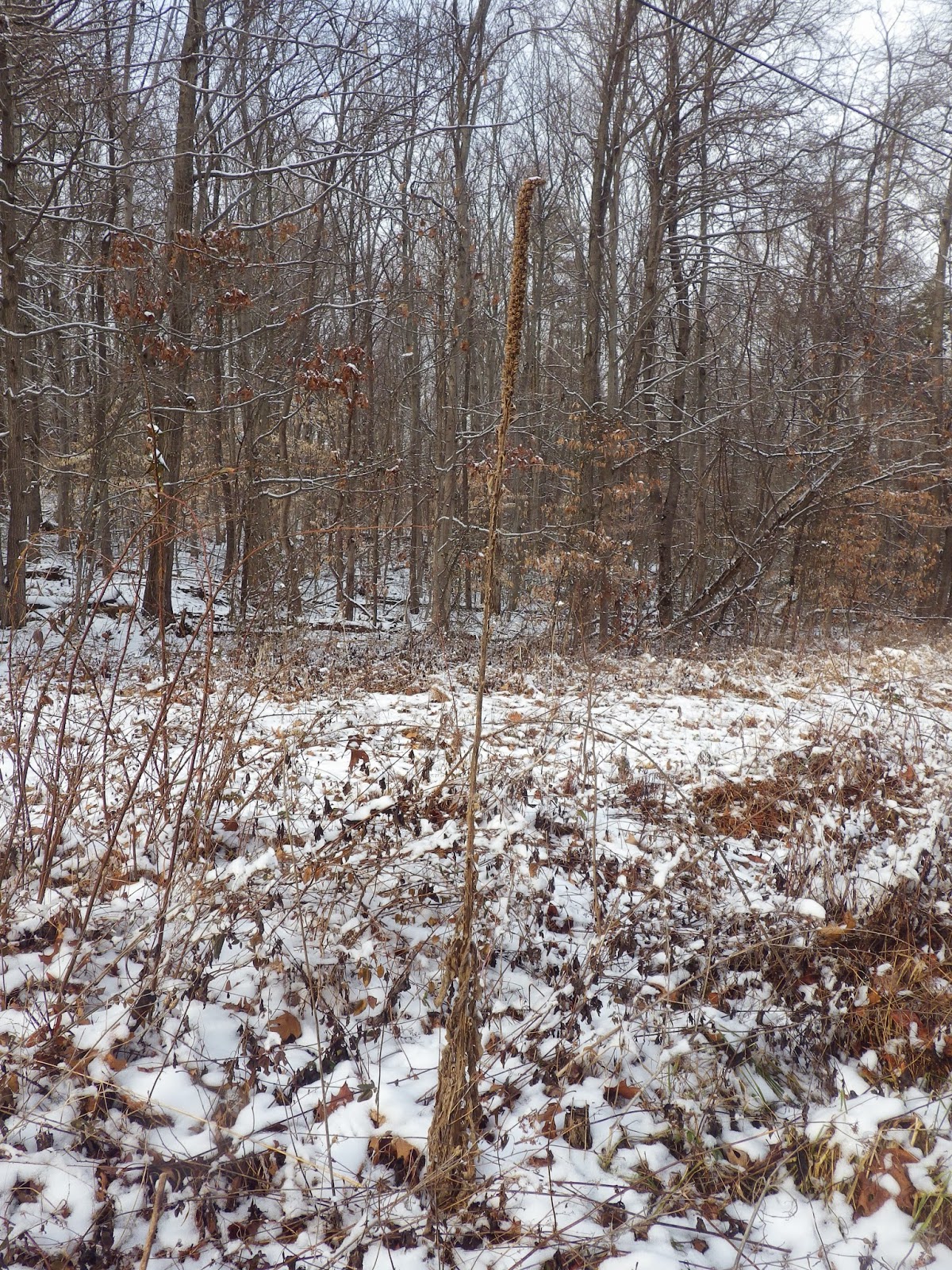An important aspect of wild-harvesting is to follow the plant throughout the year. This way you can get to know it not just in its full glory during peak bloom or initial spring flush, but also in seed, in winter, and eventually at seedling stage. This helps in locating plants for harvest - if no matter when you are out and about exploring you can identify them, and know where to return later.*
 |
| Goldenrod - Solidago spp. |
 |
| Goldenrod - Solidago spp. (Hubbie in red ;) ) |
It's also important to know what part of the plant to harvest and when to harvest for optimum strength. Spending regular time in outdoor locations throughout the year will enable you to be there when the time is right. Every season has it's beauties.
 |
| Heal All - Prunella |
These photos were taken mid-February in the mountains of Virginia. My apprentices couldn't make it out because of the weather, so I did an herb walk and photo essay for them and am sharing it here.
 |
| Mullein - Verbascum |
 |
| Mullein - Verbascum |
All of these plants were photographed on one walk beginning on higher ground and leading to a stream.
A plant's location can also help you with identification. Do you know which of these were found near the stream? and which would not want their feet wet?
 |
| Wild Basil - Satureja, Clinopodium, Calamintha |
 |
| Wild Basil - Satureja, Clinopodium, Calamintha |
Winter is a nice time to get to know a plant because you can see its bare bones, its skeleton, it's basic structure, and often its seed pods. Pay attention to how it grows on the whole - its habit - and get down close with it and inspect the details. Fascination awaits!
 |
| Alder - Alnus |
 |
| Alder - Alnus |
What new plants will you learn this year? What plant allies are you working with this winter?
 |
| Shiso - Perilla |
 |
| Shiso - Perilla |
*Please get to know your plants well enough to know which ones should be harvested and use ethical harvesting practices if you do, never taking more than 10% unless it is a known common, plentiful, invasive and never harvesting at all if rare or endangered. Also, know how to harvest so that you allow the plants to continue. Spread their seed, refrain from using the roots if possible, and prune for good regrowth.
There will be more of these posts to come to help you with identification....











Thanks Melissa!
ReplyDelete